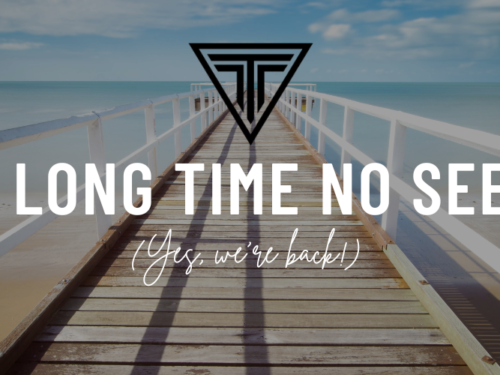For the last couple of months, as some of you may know, I’ve been busy creating the Online Writing Log (affectionately called OWL). OWL originally was a project I envisioned early last year during one of the many late nights I was logging my writing stats for the day. At the time, I just didn’t have the tools to make it happen. Instead, initially at the prodding of other writers, I created the Writing Log Spreadsheet ( which is available here) which over time morphed into the Online Writing Log as I discovered technology that allowed me to create what I wanted to create in the first place.
At this point in time, OWL is quite usable. In fact, I’ve been using it to track all my writing and editing in September (Although you can’t login yet unless I granted you access, the landing page is live on https://www.onlinewritinglog.com). It’s to the point where I feel comfortable enough that I’d like to have a few of my fellow writers come along and poke at it a bit in what I’d call a closed beta. I’ll share a bit more about that further down in this post. Before I do that, I’d like to share a bit more about OWL and the vision behind it.
But, before I do that, let me point out that I’ve set up a separate newsletter for OWL. You can subscribe to it here:
The OWL newsletter will contain details about future updates etc. and subscribers to the newsletter will also be the first to get access to the closed beta, unless you ask nicely 🙂 It’s basically a compliment to the weekly updates I’ve been posting on Patreon.
The Purpose of the Online Writing Log
Although I think I have communicated the “why” of the writing log previously, it’s worth restating: the writing log, whether it’s the spreadsheet or OWL, is intended to help you set writing (or editing) goals, track your sessions towards that goal and help you know when you get there so you can celebrate your successes.
To show you these successes, OWL, in particular, is currently defined by four distinct aspects: 1) define your project, 2) set your goals, 3) track your activities and 4) measure your success. Of these four, you’ll spend the most of your time with #3 and #4. What I’d like to do in this blog post is outline in a bit more detail what this all entails. Then, in the next week or so, dig into each one of these a bit more before opening the app up for a closer look.
1) Define Your ProjectS
As writers, we quite often have a variety of projects going on at the same time. So, it felt appropriate to include a way to define what you’re working towards besides just a word count.
Projects are essentially your books, your blog posts, newsletter, whatever it may be that you feel you want to track on a regular basis, regardless of whether it has a goal or not (blog posts and newsletters may not, for example, have a word count goal). The goals you set for your projects are not time-bound, just tied to your projects.
2) Set Your Goals
Next, you set your goals. For the first release, these goals are centered around monthly writing targets (kind of like the Monthly Writing Challenge on Twitter or NaNoWriMo). For example, you may want to try to write 500 words per day for every day of the month. That’s 15000 words per month. You set that target for any month you’re in or that’s upcoming and then let the app calculate how much you need to write on a daily basis to get there.
3) Tracking your activities
Once you have a goal, you can start tracking your writing or editing. It’s simple: keep track of the time you’re writing (start and stop times) as well as your word count and then just add it to the appropriate project. Or, alternatively, you can start the timer when you start writing or editing and let it count while you’re doing your thing. Just remember to stop and save it when you’re done.
4) Measure your success
Measuring how you’re doing towards your goal can be done in multiple ways. First of all, the activity log screen already has statistics on how you’re doing towards your goal on a daily basis. If you just want to make sure you’re meeting your goal on a daily basis, that’s all you really need to do. However, if you’re curious to see how you’re doing across the current month, even year, check out the dashboard. Here you can see how your word count correlates with the amount of time it takes to write, what days you’re struggling more to get words down, how you’re doing month to month, what activities you spend the most time on as well as what projects you spend the most time on. For example, if your focus is working on your novel and instead you’re finding that you’re writing blog posts or flash fiction instead, you may need to refocus.
Anyway, that’s a summary of OWL. During the next week or so, I’ll be posting more details on each of the above four sections, how to use them and what they tell you.
Not seeing something you wish the app had? By all means, let me know. This is the perfect time to do so. The above is the basic framework for the future development of the app that will include things like leaderboards for comparing against others on a weekly and monthly basis, challenges you can create and join to compete for specific goals, achievements and so on. In other words, OWL is far from done.
The Closed Beta
For those interested in kicking the tires on this thing a bit, I’ll be opening the app up to a closed beta, likely starting within the next week. Since the first of the month is coming around, it seemed like a good time to get people to use it (although I’m not sure at this point whether it’ll be ready for a spin by the 1st). If everything goes well, I’ll open it up to the public mid to late October, just in time for Nanowrimo and other fun challenges.
Other Important Information
One question likely on the mind of some of you will be “what will this thing cost?” For the basic level, the intent is to keep it free. This will include all of the above four aspects, with some limitations on the number of projects and challenges you can add and participate in. Also, some features, like the dashboard, will have a more limited view under the free plan. The premium subscription feature will, once launched, remove those limits and open up other features.
The reason for this freemium model, if you want to call it that, is that hosting an app like this has some cost associated with it, costs that increase as the number of users increase. The subscription model is intended to offset those charges and allow for good performance across the platform as the app grows.
Having said that, ideally, I’d love to keep everything available to everyone. If enough people support the project on Patreon, as opposed to subscribing in-app, that would be even better for everyone. So, if you like the idea of what I’m trying to do here and have some spare change you can donate every month, check out the Patreon page I set up for this project. Even $1 can go a long way towards making this happen. You can find it here:
http://www.patreon.com/thewritinglog
Thoughts? What do you think? Don’t hesitate to let me know.,





